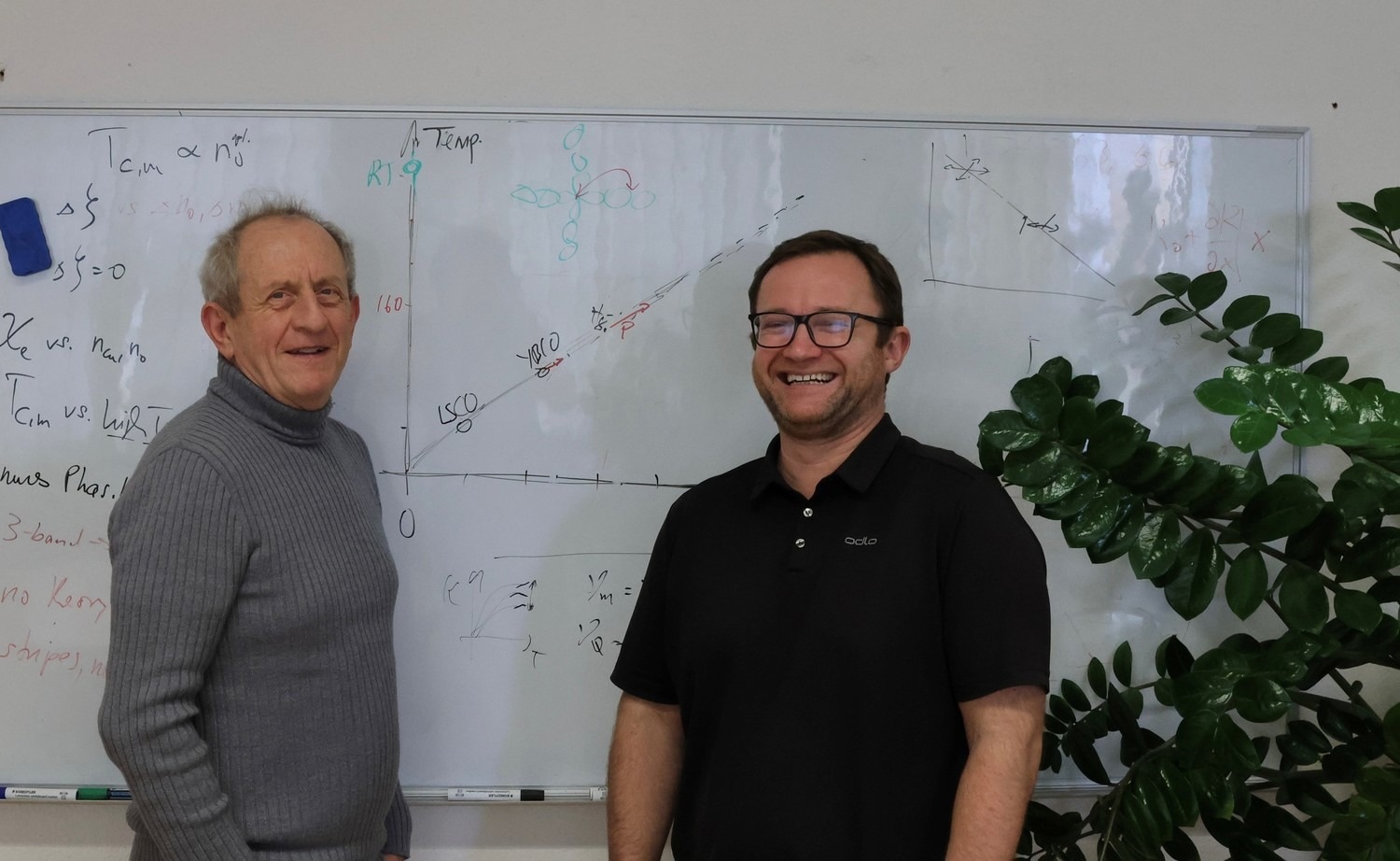A better knowledge of the mechanism behind superconductors has yet again been gained by the physicists at Leipzig University.
 Professor Jürgen Haase (left) and Michael Jurkutat, Leipzig University. Image Credit: Daniel Bandur/Leipzig University
Professor Jürgen Haase (left) and Michael Jurkutat, Leipzig University. Image Credit: Daniel Bandur/Leipzig University
The research team, headed by Professor Jürgen Haase, is now one step closer to their aim. The goal is to develop the foundations for a theory for superconductors that would enable current to flow in the absence of energy loss and resistance.
In superconducting copper-oxygen bonds, known as cuprates, the scientists discovered that there should be a particular charge distribution happening between the oxygen and the copper, even under pressure.
This verified their own findings from 2016, when Haase and his team came up with an experimental technique depending on magnetic resonance. This method could help quantify changes relevant to superconductivity in the materials’ structure.
These researchers were the first team in the world to find a measurable material parameter that exhibits the potential to forecast the utmost possible transition temperature, which is a condition needed to attain superconductivity at room temperature.
Currently, they have found that cuprates, which improve superconductivity under pressure, track the charge distribution forecasted in 2016. The scientists have reported their new findings in the well-known journal PNAS.
The fact that the transition temperature of cuprates can be enhanced under pressure has puzzled researchers for 30 years. But until now we didn’t know which mechanism was responsible for this.
Jürgen Haase, Professor, University of Leipig
Haase continued, “At Leipzig University—with support from the Graduate School Building with Molecules and Nano-objects (BuildMoNa)—we have established the basic conditions needed to research cuprates using nuclear resonance, and Michael Jurkutat was the first doctoral researcher to join us.”
Haase added, “Together, we established the Leipzig Relation, which says that you have to take electrons away from the oxygen in these materials and give them to the copper in order to increase the transition temperature. You can do this with chemistry, but also with pressure. But hardly anyone would have thought that we could measure all of this with nuclear resonance.”
At the Felix Bloch Institute for Solid State Physics, Haase and his collaborators have come up with a great deal closer to comprehending the real mechanism present in these materials.
Their present research finding could be what is required to produce a superconductor at room temperature. According to Haase, this has been the dream of several physicists for decades and is currently anticipated to take just a few more years.
So far, this has only been made feasible at very low temperatures, around −150 °C and below, which are not simple to find anywhere on Earth. Almost a year ago, a Canadian research group confirmed the findings of Professor Haase’s group from 2016 with the help of newly developed, computer-aided calculations and thus theoretically validating the findings.
Today, superconductivity is being used already in numerous ways; for instance, in nuclear fusion and magnets for MRI machines. However, it would be much simpler and cheaper if superconductors functioned at room temperature.
The superconductivity phenomenon was found in metals as early as 1911, but even Albert Einstein failed to try to come up with a clarification in those days. Almost half a century passed before BCS theory offered a comprehension of superconductivity in metals in 1957.
In 1986, the discovery of superconductivity present in ceramic materials (cuprate superconductors) at much greater temperatures by physicists Georg Bednorz and Karl Alexander Müller brought up new questions. However, they also raised the belief that superconductivity is possible to be obtained at room temperature.
Journal Reference:
Jurkutat, M., et al. (2022) How pressure enhances the critical temperature of superconductivity in YBa2Cu3O6+y. PNAS. doi.org/10.1073/pnas.2215458120.